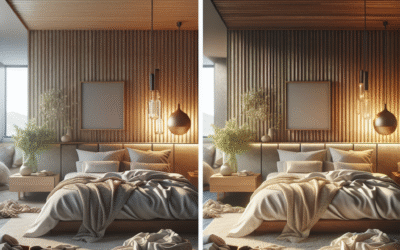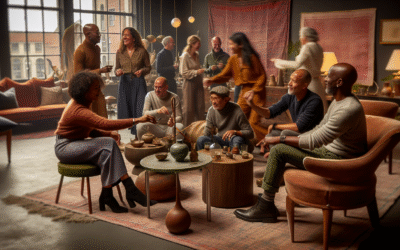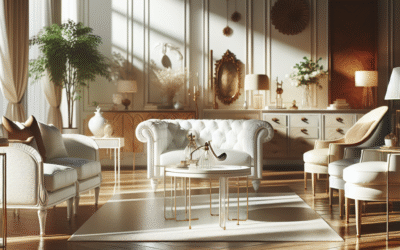
Are you searching for ways to enhance your well-being while being kind to the planet? Eco-friendly wellness design strategies offer innovative solutions that combine aesthetics with sustainability. As we become more aware of environmental concerns, the demand for sustainable living spaces increases.
This article will guide you through essential eco-friendly design principles, practical tips for implementing them in your spaces, and the deeper benefits of prioritizing sustainability. You’ll learn how to transform your environment into a sanctuary that supports both your health and the health of the planet.
Table of Contents
- Understanding Eco-Friendly Design
- Benefits of Sustainable Living
- Key Eco-Friendly Materials to Use
- Designing for Wellness
- Implementation Strategies
- Frequently Asked Questions
Understanding Eco-Friendly Design
Eco-friendly design, often termed “sustainable design,” focuses on creating spaces that reduce negative impacts on the environment. This approach emphasizes the use of sustainable materials, energy-efficient systems, and a design philosophy that respects nature. The goal is to improve indoor air quality, lower energy consumption, and enhance the overall well-being of the inhabitants.
What Constitutes Eco-Friendly Design?
- Use of sustainable materials: wood, bamboo, recycled metals, and low-VOC paints.
- Integration of natural light through windows and skylights.
- Incorporation of energy-efficient appliances and fixtures.
- Placement of indoor plants for improved air quality.
Benefits of Sustainable Living
Embracing eco-friendly wellness design brings numerous benefits, both personal and collective. Here are some key advantages:
Healthier Indoor Environments
Healthy indoor environments promote longevity and well-being by reducing toxins and improving air quality. Improved ventilation systems and natural materials foster spaces conducive to physical and mental health.
Cost Savings
While initial investments in eco-friendly materials can be higher, the long-term savings through energy-efficient systems and reduced water bills add up significantly. Many sustainable features generate return on investment over time.
Enhanced Aesthetic Appeal
Spaces designed with sustainability in mind often have a unique character that merges with nature. Natural materials and adaptive reuse of existing structures bring a story behind each design choice, making them visually compelling.
Key Eco-Friendly Materials to Use
Choosing the right materials is crucial for eco-friendly wellness design. Here are some essential materials to consider:
Recycled Materials
Recycling construction materials minimizes waste. For example, reclaimed wood can be used for flooring or furniture, offering both beauty and sustainability.
Low-VOC Products
Low-volatile organic compound (VOC) paints and finishes reduce harmful emissions in your home. Look for certifications like Green Seal or Greenguard.
Natural Fibers
For textiles, opt for organic cotton, wool, or hemp. These materials are eco-friendly, breathable, and often more comfortable than synthetic alternatives.
Designing for Wellness
When focusing on wellness in design, it’s essential to consider how different elements can influence emotional and physical health.
Maximize Natural Light
Natural light affects mood and productivity. Design layouts that ensure ample daylight penetration, which can be achieved through larger windows or strategically placed mirrors that reflect light.
Indoor Flora
Incorporating plants into design not only beautifies the space but promotes psychological well-being. Plants like peace lilies and snake plants purify air and increase oxygen levels.
Implementation Strategies
Bringing these eco-friendly wellness design strategies to life requires planning and commitment. Here are steps to guide you:
Assessment of Current Space
Start with an assessment of your current living space. Identify areas where you can introduce sustainable practices or materials.
Engaging Professionals
If overwhelmed, consider hiring a sustainable design consultant to assist in the transition. They can provide expert advice tailored to your needs.
DIY Projects
For a hands-on approach, tackle small eco-friendly projects. Simple tasks like painting with low-VOC paints or repurposing old furniture can be both rewarding and impactful.
Frequently Asked Questions
What is eco-friendly design?
Eco-friendly design prioritizes sustainable materials, energy efficiency, and overall reduced environmental impact, creating healthier living spaces.
How can I make my home more sustainable?
Start by assessing your materials, incorporating natural light, using energy-efficient appliances, and adding indoor plants.
Are eco-friendly products more expensive?
While upfront costs may be higher, eco-friendly products often lead to long-term savings due to increased energy efficiency and durability.
Can you have a stylish home that is eco-friendly?
Absolutely! Eco-friendly design can be aesthetically pleasing with creative choices in materials, color schemes, and layouts.
How does natural light affect wellness?
Natural light boosts mood, productivity, and overall well-being, making it a crucial component in design for wellness.
Conclusion and Next Steps
Eco-friendly wellness design strategies merge sustainability with well-being, providing numerous benefits for our lives and the environment. By embracing these design principles, you can create spaces that nurture both your health and that of our planet.
Are you ready to transform your space into an eco-friendly haven? Start implementing these strategies today, and feel free to explore more related content on our website for further insights.
Content Disclaimer
The information provided in this article is for educational purposes only and is not intended as professional advice. Always consult with a qualified expert regarding specific concerns.
Categories
- Accent Walls & Ceilings (61)
- Art Curation & Gallery (62)
- Bedding Style Trends (68)
- Bedroom Makeover (81)
- Bohemian & Eclectic Styles (58)
- DIY & Budget-Friendly Decor (64)
- Eco-Friendly Design (62)
- Furniture Care (71)
- Home Decor & Design Ideas (162)
- Home Wellness Spaces (59)
- Integrated Outdoor Living (67)
- Japandi Style (61)
- Kids and Nursery Decor (59)
- Living Room Decor (79)
- Mix & Match Techniques (73)
- Modern & Contemporary Design (66)
- Rug Sizing & Placement (73)
- Scandinavian Design Inspiration (20)
- Seasonal Home Decor (79)
- Small Space Solutions (73)
- Wall Art & Painting Tips (77)
Recent Comments
Archives
Product Gallery
-
Large Area Green Rugs for Bedroom Nordic Living Room Decoration Shaped Carpet Irregular Plush Lounge Rug Home Thick Washable Mat
Rated 5.00 out of 5$36.00 – $225.00Price range: $36.00 through $225.00 -
Nordic Style Rugs for Bedroom Morandi Living Room Decoration Carpet Large Area Geometry Lounge Rug Home Cloakroom Non-slip Mat
Rated 5.00 out of 5$26.00 – $387.00Price range: $26.00 through $387.00 -
Irregular Shapes Living Room Decoration Carpet Modern Style Rugs for Bedroom Home Thicken Plush Rug Fluffy Soft Lounge Floor Mat
Rated 4.83 out of 5$37.00 – $225.00Price range: $37.00 through $225.00














